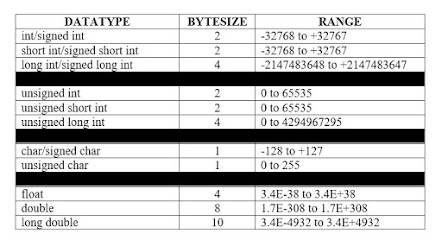Decision Making Statements in C Programming Language
- Decision making statement are use to take decision from condition.
- There are different decision making statement:
- If Statements
- Conditional Operator ? :
- Switch Case Statements
- Goto Statements
1). If Statements:
- If Statement is a conditional statements.
- It is use to take any decision.
- To take any decision, we apply one or more conditions.
- These conditions can be true or false.
- Example:
Student is pass or fail: if (marks>=35)
{
pass
}
{
fail
}
- There are four kinds of If Statements:
- Simple If Statement
- If-Else Statement
- Nested If Statement
- Else If Ladder Statement
1. Simple If Statement:
- In Simple If Statement, condition is checked.
- If condition is true then true block is executed.
- There is no else part.
- Syntax:
if(condition) {
true block;
----------
----------
}
Statement x;
----------
----------
- Write a program to consider medical allowance = 2000 if age of person is more than 50.
otherwise consider MA=1000. Take age from user as a input.
#include<stdio.h>
#include<conio.h>
void main()
{
int age, ma=1000;
clrscr();
printf("\n Enter age:");
scanf("%d", &age);
if(age>50)
{
ma=2000;
}
printf("\n MA is %d", ma);
getch();
}
2. If-Else Statement:
- if-else statement is use to check condition.
- If condition is true then True block will be executed.
- If condition is false then False block will be executed.
- Syntax:
if (condition)
{
-------
True Block;
--------
}
else
{
-------
False Block;
}
- Example: - Write a program to consider medical allowance = 2000 if age of person is more than 50.
otherwise consider MA=1000. Take age from user as a input. (using if-else statement)
#include<stdio.h>
#include<conio.h>
void main()
{
int age, ma;
clrscr();
printf("\n Enter age:");
scanf("%d", &age);
if(age>50)
{
ma=2000;
}
else
{
ma=1000;
}
printf("\n MA is %d", ma);
getch();
}
3. Nested If Statement:
- Nested If Statement is use to take more than one decision.
- Nested if statement has one or more if statement in main if statement.
- Syntax:
if(condition1) {
-------
if(condition2)
{
true block1;
}
{
false block1;
}
}
else
{
------
if(condition3)
{
true block2;
}
{
false block2;
}
4. Else If Ladder:
- else if ladder is use to check multiple conditions.
- In this, one by one condition will be check.
- If condition is true then that block will be executed.
- If all condition are false then else part will be executed.
- Syntax:
if (condition1) {
--- block1---;
}
elseif (condition2)
{
---block2---;
}
elseif (condition3)
{
---block3---;
}
elseif (condition4)
{
---block4---;
}
--------
--------
else
{
---false block---;
}
2). Switch Case Statement:
- Switch case statement is decision making statement which is used to create menu driven program.
- Syntax:
switch(expression)
{
case value1: block1;
break;
case value2: block2;
break;
case value3: block3;
break;
---------
---------
---------
default: false block;
break;
}
- In switch statement we pass expression or value.
- Based on expression, any one case is selected and execute that block.
- Each case ends with break keyword.
- If expression doesn't match with any cases then default block will be executed.
- Flow Chart:
3). Conditional Operator: (? :) - Conditional operator is used to check single condition.
- Syntax:
var_name = condition ? True Block : False Block;- In this condition is check. If statement is true then True Block is assigned to variable.
- If Condition is false then False Block is assigned to variable name.
- Example:
- if age>10, consider fees=25 otherwise fees=50. fees = (age>10) ? 25 : 50;
4). Goto Statement:
- Goto statement is use to pass the control of execution at specific position.
- Syntax1:
goto label_name; .....
...
label_name;
.....
......
...
.........
label_name;
.......
......
....
goto label_name;
.......
...
- In first syntax label name is specified after goto statement so control will pass to specific label.
- This is known as forward jump or forward goto statement.
- In second syntax label name is specified before goto statement which is known as backward jump or backward goto statement.
- goto statement must require label name.








Comments
Post a Comment